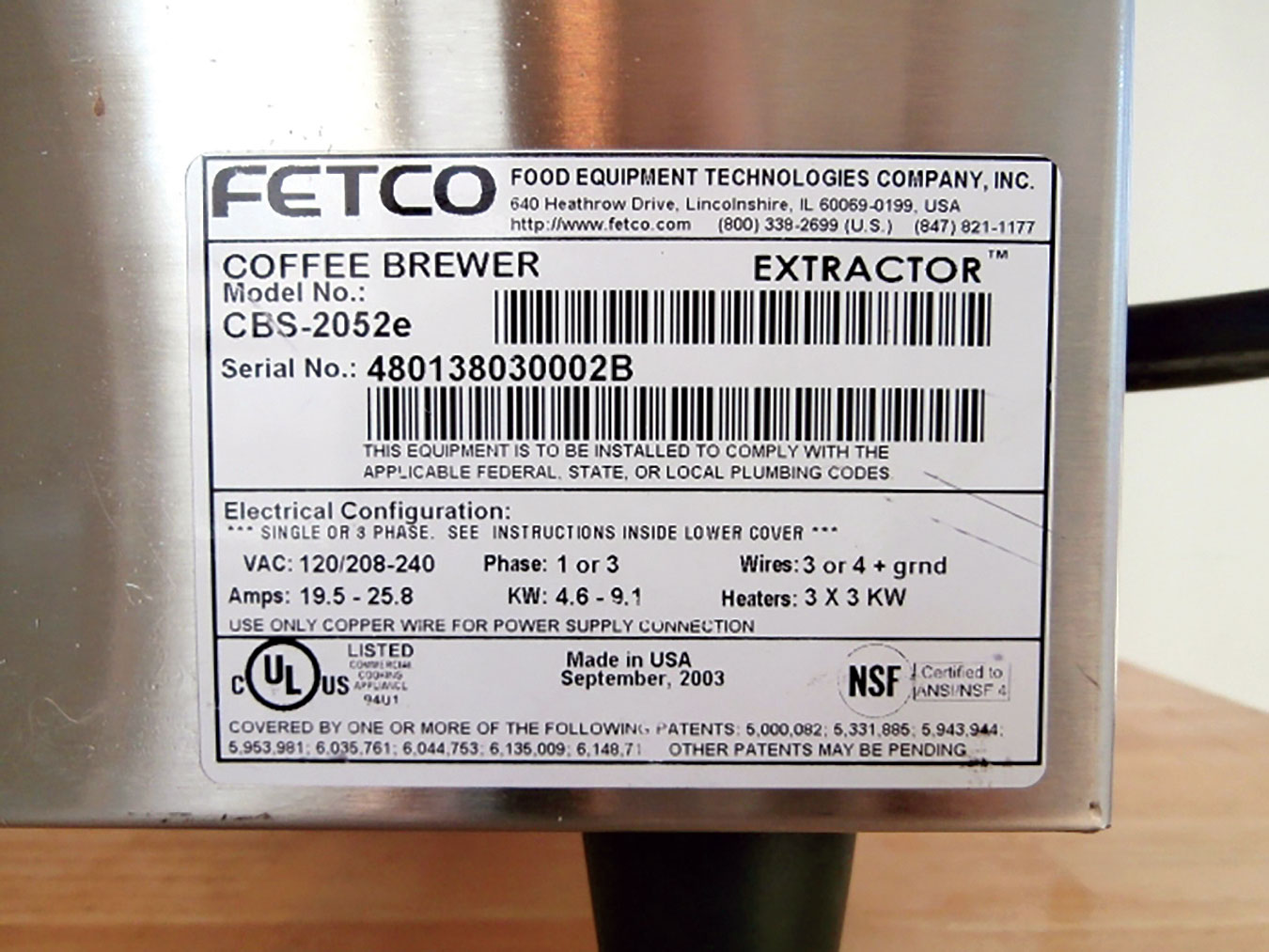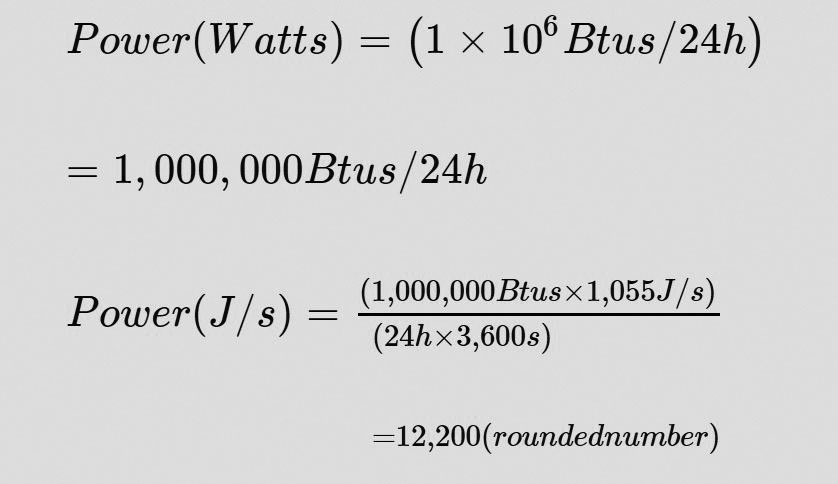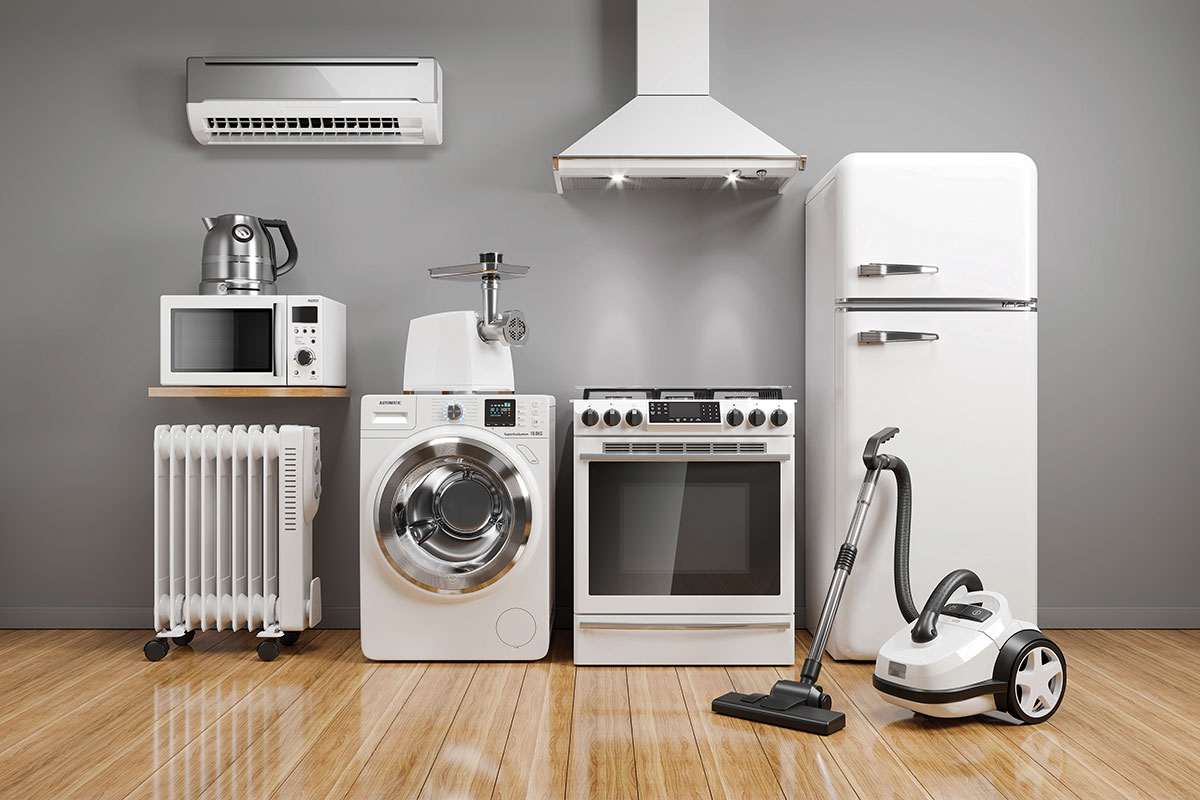How is the energy use of home appliances calculated? Let’s start by looking at how you calculate the usage of power.
Power Usage
Let’s start with the example of two cyclists who pedaled 10 miles and used the same amount of energy (218 calories). In this example, one has a faster time than the other. This cyclist demonstrated the most power.
- Power is the rate at which we do work.
- Energy is the capacity to do work.
- Work is the amount done.
Measuring Power
Units of power are not the same as units of energy (i.e., Btus, calories). Units of power are measured in terms of units of energy used per some unit of time.
Examples of Units of Power include:
- Watt (W) = 1 joule of energy per second or 1 J/S
- BTU per hour (BTUs/h) = 1,055J
- Horsepower (hp) = 550 foot-pounds per second or 550 ft lb/S
- Calories per second (cal/sec)
- Kilowatt (kW) = 1000 watts
Calculating Power
Power can be determined by the following formula:
Power = Energy (or work) / Time
Or
Energy = Power x Duration of Usage (Time)
Example
On a winter day, a home needs 1 x 106 or 1,000,000 BTUs of fuel energy every 24 hours to maintain the interior at 65° F. At what rate is the energy being consumed in Watts?
If 1 J/s = 1 Watt, and 1000 Watt = 1kW,
then 12,200 J/s = 12,200 Watts
= 12.2 kW
To solve this problem, you must realize the following: You know the Power (1,000,000 BTUs/24 hours) and the time (24 hours), so you need to solve for Energy. The measurements must be consistent, so the BTUs should be converted to a consistent measure, such as Joules:
1 Watt = 1 J/s and 1 BTU = 1,055 J
If using Joules per second instead of watts, you must convert 24 hours into seconds or divide it by the number of seconds in an hour (3600).
Power & Cost of Energy
We can also use a version of the Power formula to determine Cost of Energy:
Energy Use = Power × Time of Power Use
Cost of Energy = Energy Used × Cost of the Unit of Energy
Example
If a 100 W light bulb is accidentally left on overnight (8 hours), how much energy does it consume?
Energy Use = Power × Time of Power Use
Energy Use = 100 W × 8h
= 800 Wh or 0.8kWh
How much energy does this cost, if electricity costs 10 cents per Kilowatt?
Cost of Energy = Energy Used × Cost of the Unit of Energy
Cost of Energy = .8kWh × 10 cents
= $0.08
Energy Consumption
We know that power is calculated by power = energy/time or energy = power x duration of usage (time). By modifying this formula slightly, we can determine the energy consumption per day of appliances by applying the following formula.
Energy Consumption / Day
= Power Consumption × Hours Used / Day
Where:
- Energy Consumption will be measured in Kilowatt hours (kWh) – like on your utility bills.
- Power Consumption will be measured in Watts
- Hours used per Day will be the actual time you use the appliance.
Since we want to measure energy consumption in Kilowatt hours, we must change the way power consumption is measured from watts to kilowatts (kWh). We know that 1 kilowatt hour (kWh) = 1,000 Watts hours, so we can adjust the formula above to:
Energy Consumption / Day ( KWh )
= Power Consumption ( Watts / 1000 ) × Hours Used / Day
Example 1: Calculating Energy Use of a Ceiling Fan
If you use a ceiling fan (200 watts) for four hours per day, and for 120 days per year, what would be the annual energy consumption?
Use this formula:
Energy Consumption / Day ( KWh )
= Power Consumption ( Watts / 1000 ) × Hours Used / Day
Energy Consumption per Day ( kWh )
= ( 200 / 1000 ) × 4 ( hours used per day )
Energy Consumption per Day ( kWh )
= ( 1/5 ) × 4 Energy Consumption per Day ( kWh )
= 4/5 or 0.8
So, the Energy Consumption per Day is 0.8 kWh To find out energy for 120 days, do simple multiplication:
0.8 x 120 = 96 kWh
Example 2: Calculating the Annual Cost of a Ceiling Fan
If the price per kWh for electricity is $0.0845, what is the annual cost to operate the ceiling fan?
Annual Cost
= Annual Energy Consumption (KWh) × price per KWh Annual Cost
= 96kWh × $0.0845/kWh
= $8.12
Want Another Example?
If you use a personal computer (120 Watts) and monitor (150 Watts) for four hours per day, and for 365 days per year, what would be the annual energy consumption?
Energy Consumption/Day (kWh)
= (270/1000) × 4 (hours used / day) Energy Consumption per Day (kWh)
= 1.08
So the Energy Consumption per Day is 1.08 kWh.
To find out energy for 365 days, do simple multiplication:
1.08 kWh × 365 days
= 394.2 kWh
If electricity is $0.0845 per kWh, the annual cost would be:
Cost = 394.2 kWh × $0.0845/kWh
= $33.30
Energy Usage of a Standard Refrigerator
What is the energy consumption of a refrigerator with a wattage rating of 700 Watts when it is operated for 24 hours a day?
Step 1
To solve, use the following formula:
Energy Consumption
= Power Consumption × Number of Hours Operated
Where:
- Energy Consumption = Watt Hours (Wh) or KiloWatt Hours (kWh)
- Power Consumption = Watts (W) or kW (KiloWatts)
- Number of Hours Operated = Hours (h)
For the example above:
Energy Consumption = 700 W x 24 h
Energy Consumption = 16800 Wh
Step 2
To convert from Wh to kWh, remember that 1kWh = 1000 Wh
To solve, set up as a ratio and use linear algebra to solve for ? 1 kWh/1000 Wh
= ? kWh / 16800 Wh
= 16,800 Wh (1 kWh) / 1000 Wh
= 16.8 kWh
Locating Wattage
You can usually find the wattage of most appliances stamped on the bottom or back of the appliance or on its “nameplate.” The wattage listed is the maximum power drawn by the appliance. Since many appliances have a range of settings (for example, the volume on a radio), the actual amount of power consumed depends on the setting used at any one time.

A refrigerator, although turned “on” all the time, actually cycles on and off at a rate that depends on a number of factors. These factors include how well it is insulated, room temperature, freezer temperature, how often the door is opened, if the coils are clean if it is defrosted regularly, and the condition of the door seals.
To get an approximate figure for the number of hours that a refrigerator actually operates at its maximum wattage, divide the total time the refrigerator is plugged in by three.
Table 1 shows the wattage of some typical household appliances.
|
Power consumption (Wattage) |
|
| Appliance | Wattage (range) |
| Aquarium | 50 – 1210 |
| Clock Radio | 10 |
| Coffee Maker | 900 – 1200 |
| Clothes Washer | 350 – 500 |
| Clothes Dryer | 1800-5000 |
| Dishwasher | 1200-2400 |
| Dehumidifier | 785 |
| Electric Blanket – Single/Double | 60 / 100 |
| Fan – ceiling | 65 – 175 |
| Fan – window | 55 – 250 |
| Fan – furnace | 750 |
| Fan – whole house | 240 – 750 |
| Hair Dryer | 1200-1875 |
| Heater (portable) | 750 – 1500 |
| Laptop | 50 |
| Microwave Oven | 750-1100 |
| Personal Computer – CPU – awake / asleep | 120 / 30 or less |
| Personal Computer – Monitor – awake / asleep | 150 / 30 or less |
| Refrigerator | 725 |
| 36“ Television | 133 |
| Toaster | 800-1400 |
| Water Heater | 4500-5500 |
Amperes and Voltage
If the wattage is not listed on the appliance, you can still estimate it by finding the current draw (in amperes) and multiplying that by the voltage used by the appliance.
Most appliances in the United States use 120 volts. Larger appliances, such as clothes dryers and electric cooktops, use 240 volts. The amperes might be stamped on the unit in place of the wattage.
If not, find an ammeter to measure the current flowing through it. You can obtain this type of ammeter in stores that sell electrical and electronic equipment.
Take a reading while the device is running; this is the actual amount of current being used at that instant.
Phantom Loads
Also, note that many appliances continue to draw a small amount of power when they are switched “off.”
These “phantom loads” occur in most appliances that use electricity, such as VCRs, televisions, stereos, computers, and kitchen appliances.
Most phantom loads will increase the appliance’s energy consumption by a few watts per hour. These loads can be avoided by unplugging the appliance or using a power strip and using the switch on the power strip to cut all power to the appliance.
Dr. Sarma Pisupati is a professor with the Department of Energy and Mineral Engineering, College of Earth and Mineral Sciences with Pennsylvania State University. Article extracted from https://www.e-education.psu.edu/egee102/node/1912.
















Find Us on Socials